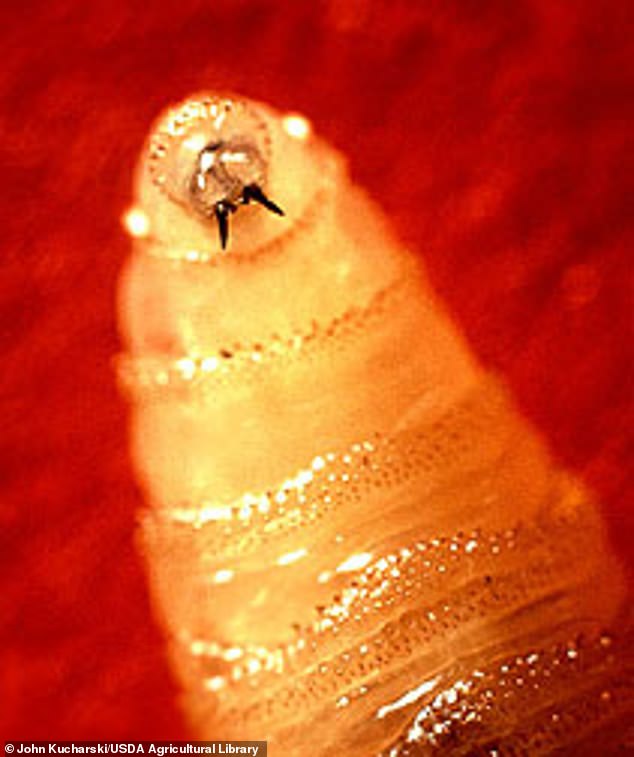A fly that lays carnivorous larvae could threaten humans and wildlife in Texas after being detected in Mexico.
He Texas Parks and Wildlife Department issued an urgent warning to its southern residents to be on the lookout for the New World screwworm, whose Latin name, hominivorax, means “man-eater.”
The warning comes after a cow with the larvae was found at a checkpoint in Chiapas, near the Mexico-Guatemala border, on November 22.
“As a protective measure, animal health officials are asking those along the southern Texas border to monitor wildlife, livestock and pets for clinical signs (of the insect) and immediately report any potential cases,” the TPWD said in a statement.
The screwworm has been migrating “progressively” north, according to the agency, and primarily infects livestock.
However, it can affect humans and wildlife, including deer and birds, TPWD said.
The parasite has not been seen in the U.S. since 1966, after an extensive federal and state sterilization process successfully eradicated the fly from the United States.
Experts worry it could have a devastating effect on the American economy if it reached the United States.
The Texas Parks and Wildlife Department has issued an urgent warning to its southern residents to be on the lookout for the New World flesh-eating worm, whose Latin name, hominivorax, means “man-eater.”

The warning comes after a cow with the larvae was found on November 22 at an inspection checkpoint in Chiapas, near the Mexico-Guatemala border. The parasite has not been seen in the United States since 1966 (pictured: El Paso, Texas).
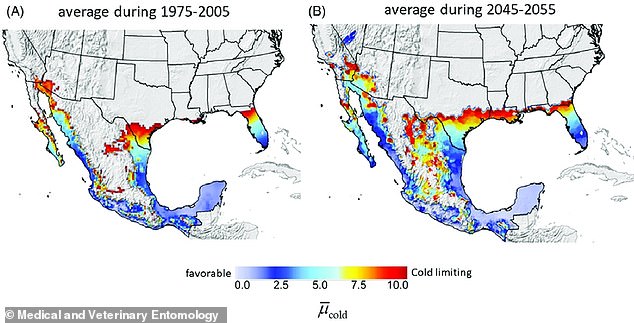
A map showing where the screwworm is currently found and how deep it is expected to penetrate the United States by 2055.
“It can have a huge impact, certainly an economic impact, because it decreases the health and well-being of our livestock,” said Texas Tech College of Veterinary Medicine associate professor Jennifer Koziol. muleteers.
“We’re thinking about the loss of animal use and certainly our wildlife populations that could be decimated by this disease.”
The screwworm begins its reign of terror when the female fly lays her eggs in an open wound or hole.
Female flies are attracted to open wounds and holes because of the odors they emit. They can be as small as a tick bite, a nasal or eye opening, a newborn’s navel or genitals, the TPWD said.
These eggs then hatch into dangerous larvae that burrow into the wound like screws, according to the agency.
Female flies can lay between 200 and 300 eggs at a time and up to 3,000 throughout their life, depending on KHO 11. Infestations may also be visible on the skin.
Infections can be fatal and often serious. The New York Times reported in 1977 that an infection could “kill an adult steer within 10 days.”
The government organization recommends covering all open wounds, especially if traveling to affected areas, such as Central or South America. He also recommended using insect repellent while hunting, hiking or bird watching.

Experts worry it could have a devastating effect on the American economy if it reached the United States. “It can have a huge impact, certainly an economic impact, because it decreases the health and well-being of our livestock,” said Associate Professor Jennifer Koziol (pictured).
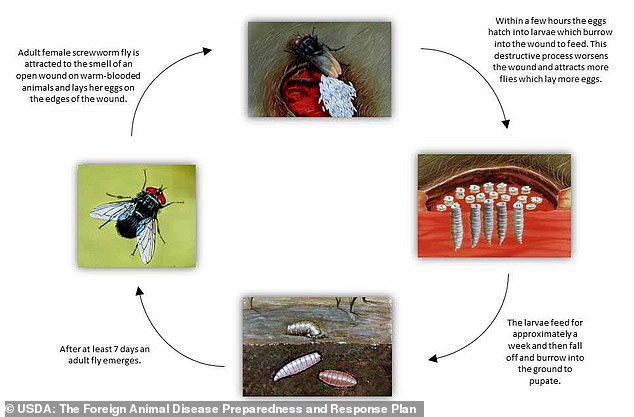
The screwworm begins its reign of terror when a female fly lays eggs in an open wound or hole. These eggs then hatch into dangerous larvae that hide in wounds like screws.
The sterilization project
When screwworms became a major problem in the U.S., they cost $200 million (about $1.8 billion today) in livestock, according to KHOU 11.
In the 1930s, the U.S. Department of Agriculture hired a team of scientists, including entomologist Edward F. Knipling, to study the fly, according to NPR.
Knipling had the idea of developing a contraceptive method for male flies, and despite his detractors thinking there was no way to sterilize enough flies, his plan worked.
He hypothesized that sterilized flies released into the wild would cause the fly population to decline and eventually be eradicated from the United States.
For more than two decades, he and Raymond Bushland worked to castrate flies by growing millions in a lab using heated ground meat, according to NPR.
Using gamma rays, they managed to make the flies infertile.
In 1958, the two scientists convinced the government to begin airdropping 50 million flies into Florida each week.
As more fell, the screwworm began to disappear in the state, and by 1959, the fly had disappeared from the Southeast.
“From there, the snowball started rolling,” Knipling said.
Flies began to fall over Texas, as well as the Southwest, Mexico, and Central America.
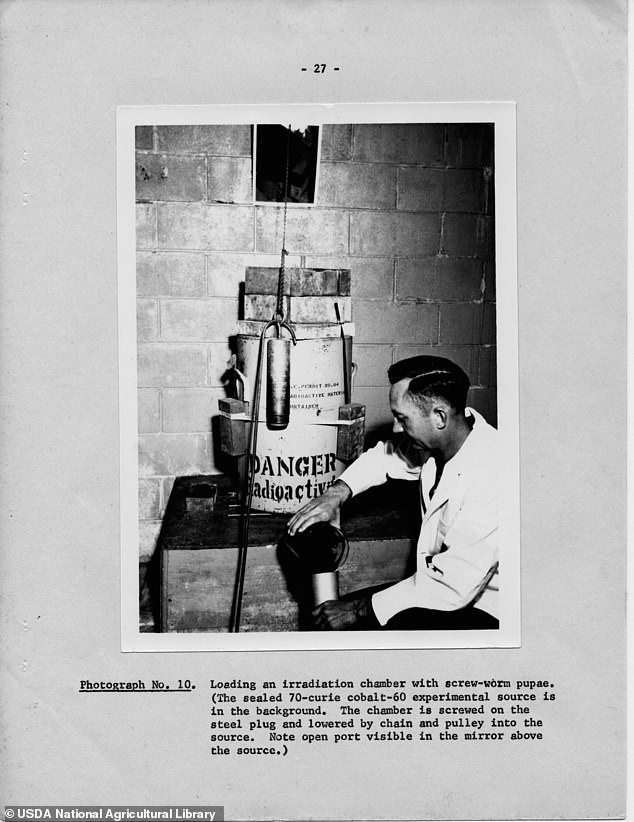
In the 1930s, the United States Department of Agriculture hired a team of scientists, including entomologist Edward F. Knipling, to study the fly. Knipling had the idea of developing a contraceptive method for male flies by releasing sterilized flies into the wild. It worked
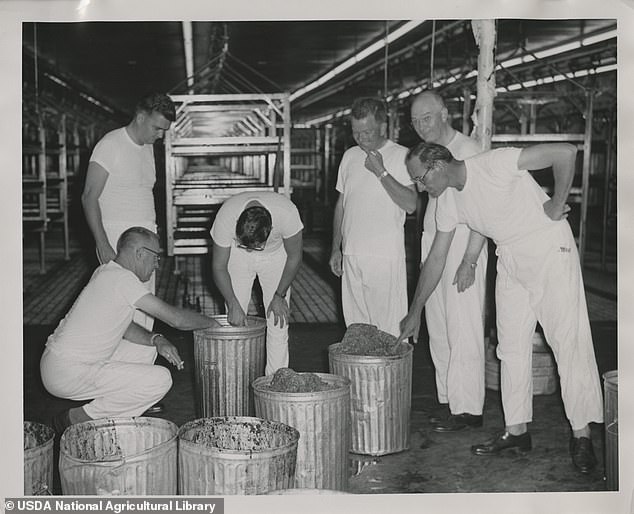
For more than two decades, he and Raymond Bushland worked to castrate flies by growing millions in a laboratory using heated ground meat. Using gamma rays, they managed to make the flies infertile. In 1966, the last flies were eradicated from the US.
In 1997, the screwworm was eliminated from Panama to Texas.
The Department of Agriculture still drops flies over Panama to prevent the insects from traveling from South America to the United States.
“A buffer zone is created,” said the scientist.
The UN called Knipling and Bushland’s work one of the “greatest achievements in animal health” of the 20th century.
In September 2016, the scientists were honored with the Golden Goose Award, which honors federally funded research that was “seemingly obscure” and ultimately led to a breakthrough, according to NPR.
The research went beyond the screwworm and was used to keep the Mediterranean fly out of North America and helped eliminate the Okinawan melon fly in Japan.


